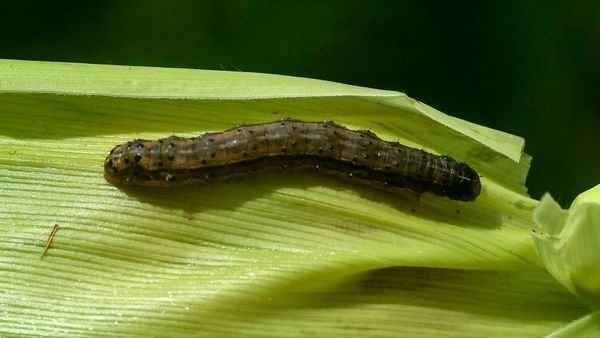
Imagine you’re sitting in a café, sipping a warm cup of coffee, and you’re intrigued by the subtle changes around you. The leaves on the trees start to turn crisp orange and brown in autumn, while spring brings vibrant blooms and buzzing bees. Similarly, bootlace worms have their own rhythm influenced by the seasons. Understanding their activity patterns can open a window into marine ecology and help us appreciate how these worms fit into their environment.
Understanding Bootlace Worms
Bootlace worms, or *Lineus longissimus*, are part of a group called nemerteans. They’re known for their incredibly long and stretchy bodies, which can be quite a sight in the shallow coastal waters. What’s truly fascinating about these worms is their ability to regenerate lost body parts. If they get injured or even cut in half, they can often grow back! This regenerative ability plays a crucial role in their survival.
These worms are usually found lurking in seaweed or sand, and they often hunt smaller creatures like crustaceans. They use a slimy substance to capture their prey, which might make you think of them as the ninjas of the sea. They’re stealthy, and their long bodies help them blend in with their surroundings.
But beyond their stealthy nature, you might be wondering how their activity changes with the seasons. Just like how some animals hibernate or become more active in the warmer months, bootlace worms also have their own seasonal habits that help them thrive.
Spring Awakening: The Start of Activity
As winter melts away and spring rolls in, bootlace worms start to wake up from their quieter months. The warming waters signal it’s time for them to become more active. You can think of it like a bear emerging from hibernation, shaking off the sleepiness after a long, cold winter.
During spring, these worms begin to hunt and feed more frequently. The abundance of food sources, like small fish and crustaceans, makes it an ideal time for them to grow and regenerate. They’ll often be found moving through the water column and searching for prey. It’s almost like they’re throwing a party in the ocean, celebrating the return of warmer temperatures!
Interestingly, the reproductive season for bootlace worms begins around this time too. They’ll release eggs into the water, which hatch into larvae that float about, ready to start their lives. This is an important phase for their population growth.
Summer: Peak Activity
If spring is a time of awakening, summer is the bootlace worm’s peak season. With water temperatures rising, these worms are at their most active. Picture them gliding through the water like dancers, taking advantage of the plentiful food and ideal conditions.
During summer, you can find bootlace worms exploring a wide range of habitats—like eelgrass beds and rocky substrates. They’re not just lounging around; they’re hunting! Their long bodies allow them to cover a lot of ground, and they can stretch to reach prey hidden in crevices.
This is also the time when you might notice them in greater numbers. The young larvae that hatched in spring have matured, adding to the population. Summer is like a bustling marketplace for bootlace worms, filled with opportunities to eat and reproduce.
Autumn Changes: Preparation for Winter
As the days start to shorten and the air becomes cooler, bootlace worms begin to prepare for a change in their activity levels. Autumn is a transitional phase, much like when we start putting on warmer clothes as summer fades. The water temperature begins to drop, and food sources might become less abundant.
During autumn, bootlace worms become less active. They tend to retreat to their hiding spots in the sediment, conserving energy as the environment cools. However, they’re still vigilant hunters—when the chance for a meal arises, they won’t hesitate to strike. Just because they’re less visible doesn’t mean they’re not there!
Autumn is also a critical time for the worms to prepare for winter. They might store energy and focus on survival tactics, much like how we stock up on warm blankets and hot cocoa as the days grow colder.
Winter: Dormancy and Resilience
When winter descends, bootlace worms enter a state of dormancy. It’s not that they completely disappear; instead, they slow down significantly. The water is colder, which means their metabolism drops, and they become less active.
During these chilly months, bootlace worms often bury themselves deep in the sand or mud to shield against harsh conditions. Just like how certain animals hibernate, they wait for spring’s warm embrace to awaken them once again. You might be wondering whether they face challenges during winter—well, they do! Food scarcity and cold temperatures make it tough, but these creatures have adapted to endure.
As the winter months pass, bootlace worms remain resilient. They can withstand the cold, holding out until the world around them begins to warm up again. Their ability to survive through tough conditions is part of what makes them such fascinating creatures.
Understanding the seasonal changes in bootlace worm activity gives us valuable insights into marine ecosystems. These worms play a critical role in their habitats, and knowing how they adapt to different conditions can help us appreciate the delicate balance of ocean life.
As we observe the rhythm of nature, it’s clear that bootlace worms are a part of something bigger. They exemplify resilience, adaptability, and the interconnectedness of life below the waves. So, the next time you think about these long, mysterious creatures, remember how their activity ebbs and flows with the changing seasons, just like the dance of life around us.
